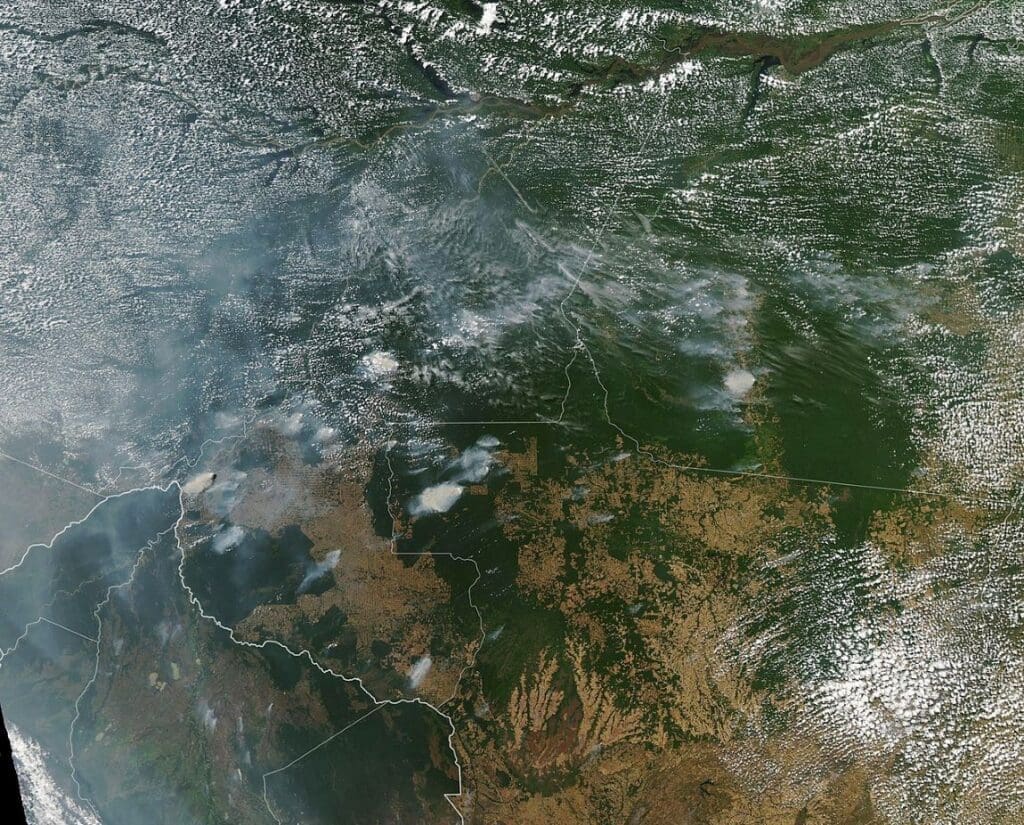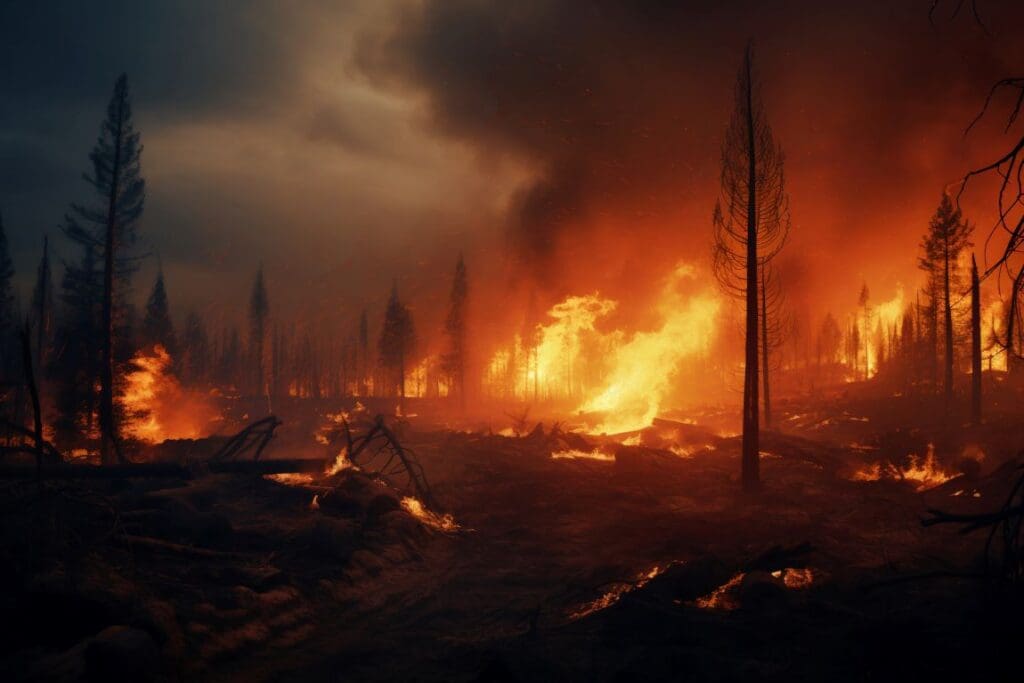Huge smoke-charged vortex doubles aerosol burden in the middle stratosphere and buffers ozone depletion.
By Max Planck Institute for Chemistry
In a revelation highlighting the fragile balance of our planet’s atmosphere, scientists from China, Germany, and the USA have uncovered an unexpected link between massive wildfire events and the chemistry of the ozone layer.
Using satellite data and numerical modelling, the team discovered that an enormous smoke-charged vortex nearly doubles the southern hemispheric aerosol burden in the middle stratosphere of the Earth and reorders ozone depletion at different heights.
This study, published in Science Advances, reveals how wildfires – such as the catastrophic 2019/20 Australian bushfires – impact the stratosphere in previously unseen ways.

The ozone layer, a crucial shield protecting life on Earth from harmful ultraviolet (UV) radiation, has been on a path to recovery thanks to the Montreal Protocol. This landmark international treaty, adopted in 1987, successfully led to phasing out the production of numerous substances responsible for ozone depletion.
Over the past decades, the ozone layer has shown significant signs of healing, a testament to global cooperation and environmental policy.
However, the stability of this vital atmospheric layer is now facing a new and unexpected challenge. During the 2019/20 Australian wildfires, researchers observed a dramatic increase in stratospheric aerosols – tiny particles that can influence climate, health and atmospheric chemistry.
Smoke-charged vortex transports aerosol up to 35 kilometers
Utilizing new satellite data and numerical modelling, the research team successfully demonstrated the impact of wildfires through a novel phenomenon: the smoke-charged vortex (SCV).
“The SCV is a powerful, smoke-laden whirlpool that transports wildfire smoke into the middle stratosphere, reaching altitudes of up to 35 kilometers,” explained Prof. Hang Su from the Institute of Atmospheric Physics at the Chinese Academy of Sciences, one of the corresponding authors of the study. “This process led to at least a doubling of the aerosol burden in the southern hemisphere’s middle stratosphere. Once reaching such high altitudes, these aerosols initiated a series of chemical reactions at their surface that impacted ozone concentrations.”
The international team discovered that these wildfire-induced aerosols facilitated heterogeneous chemical reactions in the stratosphere, which paradoxically led to both ozone depletion and ozone increase at different atmospheric layers.
While the lower stratosphere experienced significant ozone depletion, the new study shows that the increase of smoke aerosol particles in the middle stratosphere enhances the heterogenous uptake and hydrolysis of N2O5, which leads to a decrease of reactive nitrogen gases, e.g., NOx, and an increase of ozone.
In Southern Mid-Latitudes, the complex interplay managed to buffer approximately 40% (up to 70%) of the ozone depletion observed in the lower stratosphere in the following months of the mega-bushfire events.
So why does this matter?
“Our study uncovers an unexpected and crucial mechanism by which the absorbing aerosols in wildfire smoke, such as black carbon, can induce and sustain enormous smoke-charged vortices spanning thousands of kilometers, fundamentally changing the stratospheric circulation. The vortices can persist for months, carrying aerosols deeply into the stratosphere and affecting the ozone layer in distinct ways at different altitudes. This highlights the need for continued vigilance and research as climate change progresses,” said Prof. Yafang Cheng, another leading author from the Max Planck Institute for Chemistry.
“We’ve made a significant step forward in simulating the SCV as a new effective pathway for wildfires to modify stratospheric dynamics and chemistry, especially the ozone layer. Personally, I love this study because it once again demonstrates how closely different parts of the Earth system are connected. Smoke from a forest fire can significantly change the wind and circulation tens of kilometers above the ground, which allows the smoke to modify the ozone layer, influencing life on our planet,” said Dr. Chaoqun Ma, the first author of the study and postdoc researcher in Cheng’s team at the MPIC.
The ozone layer’s role in filtering UV radiation is crucial for protecting all life forms on Earth. The Montreal Protocol’s success in reducing ozone-depleting substances was a monumental achievement. Still, the new findings highlight that natural events, exacerbated by climate change, pose additional risks to this fragile atmospheric layer.
With the increasing frequency and intensity of wildfires driven by global warming, the formation of SCVs and their impact on the stratosphere could become more common, posing a threat to the ozone layer.
More information: Chaoqun Ma et al., ‘Smoke-charged vortex doubles hemispheric aerosol in the middle stratosphere and buffers ozone depletion’, Science Advances (vol. 10, eadn3657; 2024). DOI:10.1126/sciadv.adn3657 | MPIC Press Release / Material. Featured image credit: ActionVance | Unsplash




